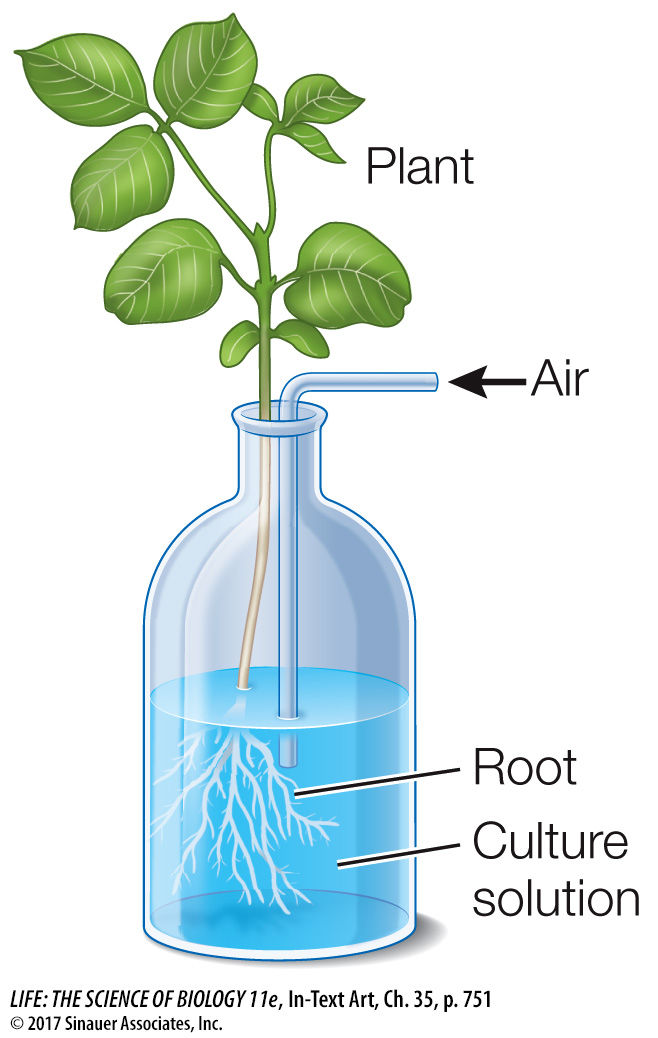Hydroponic experiments identified essential elements
The essential elements for plants were identified by growing plants hydroponically—that is, with their roots suspended in nutrient solutions instead of soil. Growing plants in this manner allows for greater control of nutrient availability than is possible in a complex medium such as soil.

In the first experiments of this type, performed a century and a half ago, plants seemed to grow normally in solutions containing only calcium nitrate [Ca(NO3)2], magnesium sulfate (MgSO4), and potassium phosphate (KH2PO4). A solution missing any of these compounds could not support normal growth. Tests with other compounds that included various combinations of these elements soon established the existence of six essential elements: calcium, nitrogen, magnesium, sulfur, potassium, and phosphorus. These are now known as the essential mineral macronutrients.
Iron was the first micronutrient to be clearly established as essential, in the 1840s. The most recent micronutrient to be listed as essential was nickel, in 1983. Identifying essential micronutrients proved to be more difficult than identifying macronutrients because of the small amounts involved. Sufficient amounts of micronutrients can be present in the environment used to grow plants or in the plants themselves. A seed may contain enough of a micronutrient to supply the embryo and the entire plant throughout its lifetime. There might even be enough left over to pass on to third-